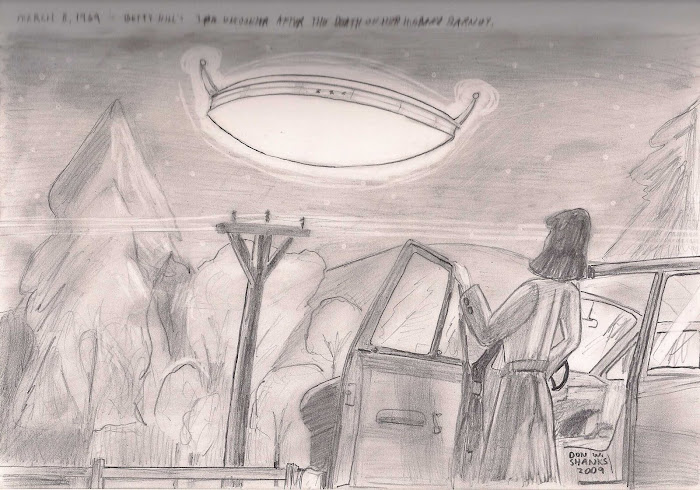.jpg)
This is something that I have been wanting to post about for a few weeks now since I first read about it in Aviation Week & Space Technology (December 8, 2008. pgs 56-58). Work has been progressing on a new hybrid rocket technology that if successful – can lead to a full-scale development of a single-stage-to-orbit (SSTO) reusable launch vehicle.
News from Reaction Engines, a company that was developed 19 years ago for the design and building of a reusable launch vehicle known as the “Skylon.” They got their feet wet while working on the aborted Hotol (Horizontal takeoff and landing) vehicle. A joint BAE Systems venture with Rolls-Royce SSTO spaceplane project that was canceled in 1988. The true promise of the HOTOL was in its RB545 air-breathing hybrid rocket engine. Alan Bond, who worked on that project and is now a managing director of Reaction Engines for their improved engine design known as SABRE (synergic air-breathing engine). “We learned an enormous amount from Hotol, and that has enabled us to look at a new vehicle of this complexity in its entirety. Hotol is therefore the foundation on which Reaction Engines is built.”
Quoting from the AW&ST article: “Skylon is designed to routinely and repeatedly carry large payloads to low-Earth orbit, with each vehicle capable of some 200-plus missions. Although designed to take 26,450 pounds (12 tons) to equatorial low Earth orbit (LEO), or up to 19,400 pounds to the International Space Station (ISS) from an equatorial launch site.” Reaction Engines believes that with aircraft-like turn around times between missions, it will reduce resupply costs to around 1/50th that of comparable conventional launch vehicles.
The Skylon is to be built out of composite structures and other innovative design features, including a fiber-reinforced ceramic aeroshell. But the real key to Skylon will be the Sabre engines. They will power the sleek spaceship from a standing start on the runway up to orbit. Before with the Hotol, they had some engine installation issues that in the end killed off Hotol. That was because the engines were mounted in the tail which made that vehicle impossible to control. The Skylon design solves this problem by moving the engines to mid-body, mounted on stub wings close to the payload and center of gravity of the spacecraft. The wingspan for the Skylon is 80 feet and from the illustration included with the article, one can see the Hotol roots for the design. Or to think of it in another way – the Skylon is something George Lucas's Star Wars team would have come up with for the planet Naboo.
The liquid hydrogen-fueled Sabre burns atmospheric oxygen from take-off (300 knots at least) through Mach 5 plus and up to an altitude of 16 nautical miles (30 kilometers). At this point in the flight profile, the air is too thin and thus the engines switch to on board oxygen supplies for the final acceleration to Mach 25 and on into orbit. Returning to Earth, the engines can be reactivated to assist with a power descent and landing. Landing speeds will be more manageable in the 130 knot range, even with a full payload Mr. Bond reports.
While there have been other air-breathing scramjets before, Sabre has a different oxygen extraction process. Sabre is more closely related to liquid-air-cycle (LACE) that use the cooling capacity of cryogenic liquid hydrogen fuel to liquefy the incoming air. LACE however requires high fuel flow rates because of the large quantity of coolant used in the condensation process. Plus there was the technical challenges of dealing with clogging in the condenser from frozen carbon dioxide, argon, and water vapor as the limiting factors to LACE technology.
Mr. Bond went one to talk about a related technology known as ACE (air collection engine) that is similary compromised. Sabre gets around the LACE/ACE problems by only cooling down the air to the vapor boundary (at around 80K) and avoiding liquefaction. This then allows the use of a relatively conventional high-pressure turbo compressor and avoids the requirement for an air-condenser as well as saving a large amount of cooling flow.
Now the Rolls Royce engine RB545 is also similar, but uses high-pressure hydrogen to cool the air directly. But it has a problem at high Mach numbers by making the metal in the pre-cooler brittle. To get around this snag, Reaction Engines interposes a helium loop between the incoming air and the hydrogen system. The helium system is used to drive the air compressor, and enables nore heat-resistant alloys to be used in the pre-cooler.
Air collection is done through a two stage conical shock inlet with “a translating center-body to maintain shock-on-lip conditions.” Reaction Engines told AW&ST “We sized the inlet for around Mach 5. We take-off with the max throat area and move the center body forward at Mach 1.5 to form an oblique shock wave. The center body also moves forward for reentry to close off the engine inlet. Excess air is spill out via bypass ducts where it is controlled by nozzle guide vanes and mixed with surplus hydrogen before being reheated in ramjet fashion to recover the momentum lost through the capture shock system at Mach 3 – 4. “The bypass system is used to match the variable captured air flow to the engine demand and “in air-breathing mode fuel consumption will be much better than in rocket mode.” Mr. Richard Varvill chief engineer/technical director for Reaction Engines. To go from Mach 5 onwards, Mr. Varvill added: “We start the liquid oxygen turbo pump and run the engine down to a lower thrust and dump air delivery overboard. A valve is switched to bleed air out, and we start to replace flow of air into the combustion chamber with liquid oxygen. The hydrogen flow continues (in a 6:1 rocket mode).”
Right now, Reaction Engines is waiting on funds to launch into full scale development. In the meantime, they are focusing on testing and verifying the key technologies at its laboratories at Culham Science Center. Along with the heat-exchanger technology, Reaction Engines also is working on the frost control technique developed and prefected in the company's cryogenic wind tunnel. Mr. Alan Bond stated that the Sabre is not possible without frost control. Now the frost control is used in the pre-cooler heat exchanger which reduces the temperature of air entering the engine from a peak of around 1,000 degrees C at Mach 5 to about -140C prior to compression. Although no appreciable moisture exists at the higher altitudes beyond 6.5 nautical miles, the system is needed at low altitudes where atmospheric moisture would otherwise instantly clog the heat-exchanger matrix with frost as it precipitates directly from vapor.
The helium loop exchanger (HX3) is made from silicon carbide(SiC) and delievers a constant inlet temperature to the air compressor's main turbine. SiC was chosen because of the oxygen-rich character of the exhaust from the pre-burner and the high temperatures in the heat exchanger.
Following some shakedown tests to begin with the new year, Reaction Engines will be getting some of their funding from the British National Space Center and partly by the ESA (European Space Agency) over the next three years.
In conclusion, Mr. Alan Bond told the AW&ST reporter, “We've never seen it as a development that a single company would do. We'd like the industry to develop it and sell it around the world to the space launch market. This could happen under a public/private parnership with maybe a 30-year payback time. If someone gave us the money today it would be about 9.5 years to the start of production.”
Ref. AW&ST Dec. 8, 2008 article “Positive Reaction. Upcoming pre-cooler tests hold key for air-breathing hybrid rocket technology.” by Guy Norris/Abingdon, England. Pag 56-58.
Here is Reaction Engines website with a review of the Skylon vehicle ( http://www.reactionengines.co.uk/skylon_overview.html and http://www.reactionengines.co.uk/skylon_vehicle.html and http://en.wikipedia.org/wiki/Reaction_Engines_Skylon ).








+033.jpg)
No comments:
Post a Comment